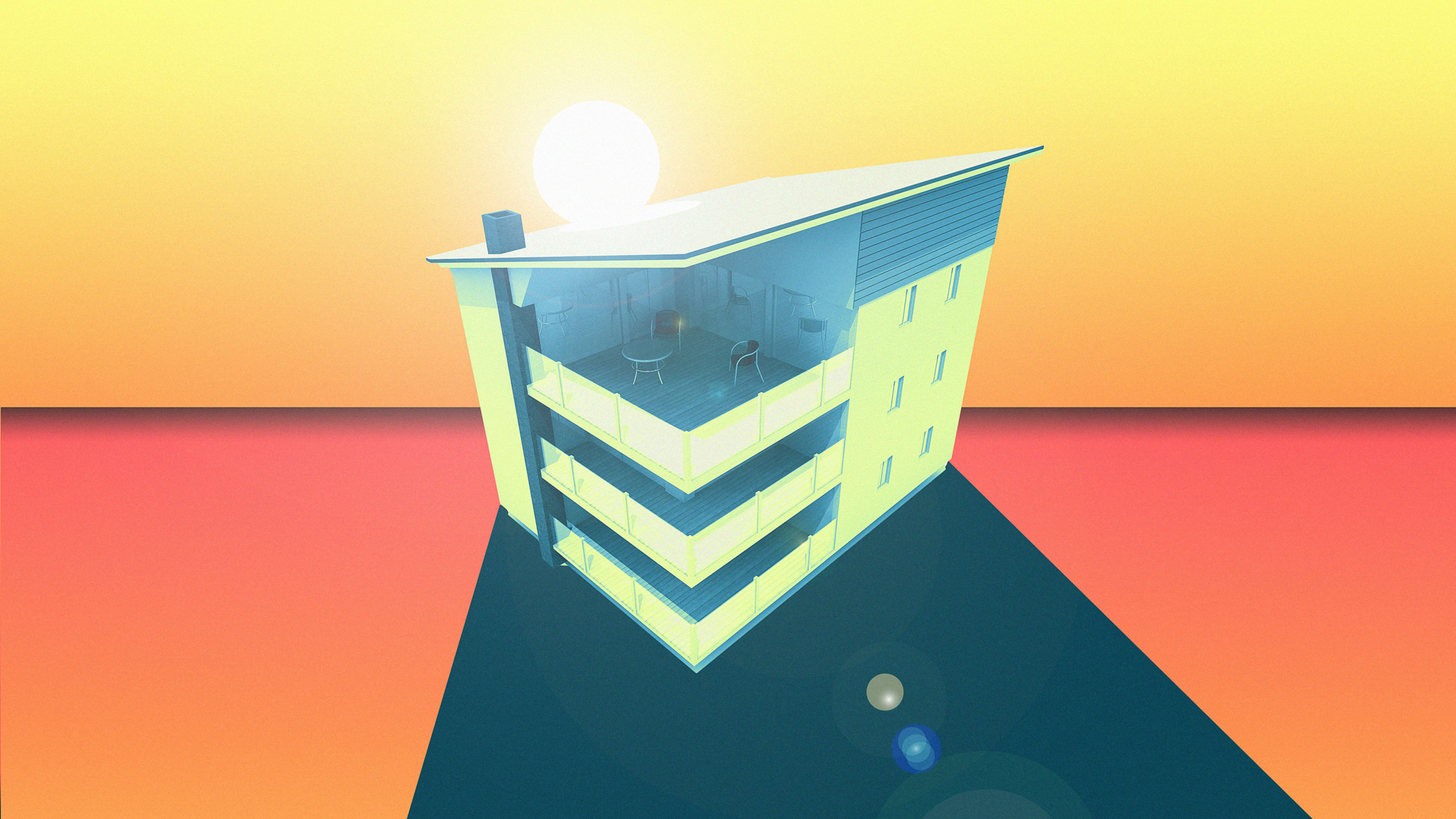As the planet gets hotter, the use of air conditioning keeps growing—and adding to emissions that make future heat waves even more likely. But a new type of coating could help buildings cool down without relying as heavily on AC. The technology, from an Israeli startup, is now being tested in a Volkswagen concept car.
The startup, called SolCold, designed a material with an outer layer that reflects most sunlight, but that lets in some particles of light. A second layer in the material reacts to specific radiation, emitting particles of light at a higher frequency. That makes the material lose energy and get cooler.
When it’s attached to a roof, the coating actively cools it down, and then helps cool the inside of the building or car as heat rises to the roof. “It’s continuously maintaining the lower temperature, not only on the coating, but penetrating below, so we can actually cool down the interior,” says founder Yaron Shenhav. As we talk on Zoom, he holds up a sample of the material: It looks a little like a thick piece of white paper.
As an engineering student, Shenhav was inspired by research that showed that certain fluorescent materials can cool down when hit with radiation from lasers. On a hot day in his apartment in Israel—where summer temperatures often rise above 100 degrees Fahrenheit—he started to wonder if the same thing could work with sunlight. A feasibility test at his university showed that it could, and after a few years of R&D, the company is now working to commercialize its product.
In a proof-of-concept test on cars, the startup found that a white car covered with the coating was as much as 25 degrees Fahrenheit cooler than a non-coated white car sitting in the sun in the middle of the day. A black car with the coating was as much as 34 degrees cooler. “Each year you can read tragic stories about babies forgotten inside parked cars who die because temperatures are too high,” Shenhav says. “Our technology, which cools without the need for electricity, dramatically drops the temperature within cars, potentially saving lives.”
Konnect, Volkswagen Group’s innovation hub in Tel-Aviv, now plans to use the coating on a concept car. On electric cars, saving electricity on air conditioning can help cars travel further on a single battery charge; gas-powered cars can save gas.
Many buildings already use white paint on rooftops to lower temperatures. In New York City, a “cool roof” program has covered more than 10 million square feet of rooftops—especially flat black asphalt roofs, which can heat up to as much as 190 degrees Fahrenheit in the sun—since 2009. On a hot day, the city estimates that a white roof can cool a building by as much as 30%. But the new coating could cool buildings even more, and cut the energy use from air conditioning by as much as 60%, Shenhav estimates.
In the future, the coating could potentially be used on buildings in countries where few people can currently afford air conditioning systems. But the new technology is itself quite expensive: In pilot tests, it now costs around $100 per square meter, and the startup is aiming to begin production next year at around $30 per square meter, still out of reach for widespread use in developing countries. “We’ll still need to wait a few years before it can be affordable [in developing countries],” he says. The company plans to start first with products for the automotive industry and with telecom and defense companies, which can use the coating to help keep electronics cool outside. The technology could later also be used on clothing; the startup has already tested stitching the coating into a t-shirt, and it could later be made into yarn.
The biggest future potential is on the roofs of homes and other buildings. The International Energy Agency has estimated that the number of air conditioners around the world could triple by 2050, making it a major driver of global electricity demand. And even as air conditioners are redesigned to save energy—and as the use of renewable energy grows—keeping the building cooler without electricity would have advantages. With reduced demand for power, future solar and wind farms might not have to be quite as big. In the U.S., one study recently estimated that American demand for air conditioning will outstrip electric supply in the next decade. And if a heat wave causes a blackout, a coated roof could keep working even while the power’s out.
Recognize your brand’s excellence by applying to this year’s Brands That Matter Awards before the early-rate deadline, May 3.
